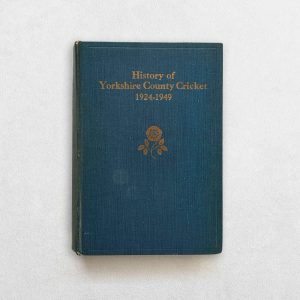Genealogy Of The Mallorys Of Virginia
Mallory, Henry R
£40.00
Availability: In stock
Product Description
Genealogy of The Mallorys Of Virginia
Author: Henry R Mallory
Price: £40
Publisher: Connecticut Historical Society
Edition: 1st edition
Publication Date: 1955
Format: Original cloth gilt
Condition: Very good
Description: Octavo. Original cloth gilt. pp. 66. The detailed and well-illustrated history. Cloth a little faded and rubbed. A very good copy. Location: OSR 002822
The Mallory Family: A Short History
The Mallory family is an ancient English lineage, with roots traceable to the Norman Conquest of 1066. The family has historically been associated with Northamptonshire, Lincolnshire, and Yorkshire, and later with Leicestershire and other parts of the Midlands. The name Mallory is believed to derive from the Old French malheure or malore, meaning “unfortunate” or “ill-fated,” possibly applied ironically or as a nickname in the early medieval period.
Norman Origins and Early Establishment (11th–13th Centuries)
- The Mallory family is reputed to have arrived in England with William the Conqueror, and early references place them among the Norman nobility rewarded with land in the wake of the Conquest.
- By the 12th century, members of the family held knightly estates in Northamptonshire and Leicestershire.
- The Domesday Book makes mention of landholdings that would later be associated with the Mallory name, particularly in the East Midlands.
Expansion and Consolidation (14th–15th Centuries)
- During the 14th century, the Mallorys became established in Studley, Kirkby Mallory, and other manorial centres in Leicestershire.
- The family rose to prominence through military service, landholding, and judicial appointments.
- By the 15th century, the Mallorys were considered part of the minor landed gentry, often serving as sheriffs, justices of the peace, or members of Parliament.
Sir Anketil Mallory and the Wars of the Roses
- One of the most prominent medieval figures in the family was Sir Anketil Mallory, who fought during the Wars of the Roses and held military command.
- The Mallorys, like many gentry families, were drawn into the conflict between Lancastrian and Yorkist factions, and their fortunes waxed and waned according to the prevailing power.
Sir Thomas Malory and Literary Fame
- The most famous member of the family is Sir Thomas Malory, widely believed to be the author of Le Morte d’Arthur (c. 1470), the definitive English prose compilation of Arthurian legends.
- While the precise identity of Sir Thomas is still debated, he is generally identified with Thomas Malory of Newbold Revel in Warwickshire, a member of the gentry who was intermittently imprisoned for various offences.
- His literary work remains a cornerstone of English medieval literature, ensuring the family name endures in cultural history.
Post-Reformation and Early Modern Period (16th–18th Centuries)
- The Mallorys, like many gentry families, navigated the Tudor Reformation with caution, retaining their estates by conforming to the established Church of England.
- In the 17th century, members of the family supported the Royalist cause during the English Civil War. Several branches were temporarily disenfranchised or fined during the Commonwealth period.
- By the 18th century, the family had largely become part of the provincial gentry, involved in county governance, the clergy, or military service.
19th and 20th Century: Decline and Legacy
- As with many rural gentry families, the Mallorys experienced a decline in landed wealth during the 19th century, due in part to changing agricultural fortunes and the rise of industrial cities.
- However, the family name continued through various cadet branches, many of whom emigrated to Canada, Australia, and the United States, especially during the Victorian era.
- One of the most notable modern descendants was George Mallory, the early 20th-century British mountaineer who died during the 1924 Everest expedition. He was born into a clerical branch of the family, with deep ties to the Church of England and education at public schools and Oxbridge.
Mallory Arms and Heraldic Identity
- The Mallory coat of arms traditionally features:
- Argent, a lion rampant sable, armed and langued gules.
- The crest often includes a lion’s head or a knight’s helmet, symbolising martial honour and noble service.
- The family motto, recorded in some branches, is “Virtute et Fide” – “By valour and faith.”
Present-Day Descendants and Name Distribution
- Today, the surname Mallory continues to be found across the English-speaking world.
- While the main aristocratic line is no longer active in British peerage, genealogical societies, family associations, and historical societies maintain records and preserve the Mallory heritage.
Why buy from us?
At Hornseys, we are committed to offering items that meet the highest standards of quality and authenticity. Our book collection is meticulously curated to ensure that each edition is a valuable and authentic piece of bibliographical history. Here’s what sets us apart:
- Authenticity and Provenance: Every book is researched, collated, and verified for authenticity.
- Expert Curation: Each book is selected with a keen eye for significance, condition, and rarity, ensuring a collection that is both diverse and distinguished.
- Customer Satisfaction: We strive to provide an exceptional customer experience, from detailed descriptions and provenance to secure and prompt delivery of your purchase.
- Returns Policy: We offer an unconditional guarantee on every item. If you wish to make a return, books may be sent back to us within fourteen days of receipt for any reason. We request advance notification of returns, and books must be returned in the same condition as sent for a full refund.
Explore Our Collection:
Visit Hornseys to explore our fine collection of rare and signed books. Whether you are an avid collector or looking for a special gift, our selection offers something truly unique. Located in the picturesque Yorkshire Dales, our Ripon gallery has been a haven for book lovers, art enthusiasts, and collectors since 1976.










